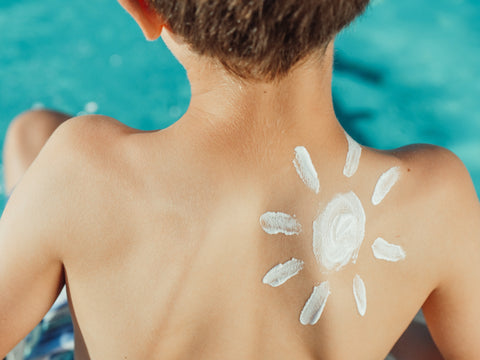How to Avoid Skin Cancer in Hawaii
Skin Cancer in Hawaii: Understanding the Risks and How to Protect Yourself
Skin cancer is the most common type of cancer in the United States, and Hawaii has one of the highest rates of skin cancer in the country. With its year-round sunshine and outdoor lifestyle, Hawaii residents are at higher risk of developing skin cancer than most other Americans. In this article, we'll cover everything you need to know about skin cancer in Hawaii, including the types of skin cancer, risk factors, and how to protect yourself.

Types of Skin Cancer in Hawaii
There are three main types of skin cancer: basal cell carcinoma, squamous cell carcinoma, and melanoma. Basal cell carcinoma and squamous cell carcinoma are the most common types of skin cancer, and they're often caused by long-term exposure to the sun. These types of skin cancer usually occur on sun-exposed areas of the skin, such as the face, ears, neck, scalp, and hands. Basal cell carcinoma and squamous cell carcinoma are usually slow-growing and rarely spread to other parts of the body.
Melanoma is less common but more dangerous, and it can spread to other parts of the body if not caught early. Melanoma usually occurs on the skin, but it can also occur in the eyes, mouth, and other parts of the body. Melanoma often appears as a dark mole or spot on the skin, but it can also appear as a pink, red, or flesh-colored bump.
Risk Factors for Skin Cancer in Hawaii
Hawaii's sunny climate means that the sun is strong year-round, and the state's residents are at higher risk of skin cancer as a result. In addition to sun exposure, other risk factors for skin cancer include a history of sunburns, a family history of skin cancer, a weakened immune system, and exposure to radiation.
Fair-skinned people are also at higher risk of skin cancer, as they have less melanin, the pigment that gives skin its color and helps protect against UV radiation. People with many moles or atypical moles, or those who have had a previous skin cancer, also have an increased risk of developing skin cancer.
Protecting Yourself from Skin Cancer in Hawaii
The best way to protect yourself from skin cancer in Hawaii is to take preventative measures. Here are some steps you can take to protect yourself:
- Wear protective clothing: Wear a hat, long-sleeved shirts, and pants when you're outside in the sun.
- Seek shade: Stay in the shade during the hottest part of the day, between 10 a.m. and 4 p.m.
- Use sunscreen: Use a broad-spectrum sunscreen with an SPF of at least 30, and make sure to apply it correctly and regularly. Hawaii has banned sunscreens containing oxybenzone and octinoxate, two chemicals that are harmful to coral reefs. Look for sunscreens containing zinc oxide or titanium dioxide instead, which are safe for the environment and provide effective sun protection.
- Check your skin regularly: Check your skin regularly for any new or unusual moles or spots. See a dermatologist if you notice any changes, such as a mole that's changing in size, shape, or color.
While skin cancer is a serious concern in Hawaii, it's also a highly preventable and treatable condition. By taking preventative measures, checking your skin regularly, and seeking medical attention if you notice any changes, you can help reduce your risk of skin cancer and ensure early detection and treatment if necessary.
While outside (and all the time, really) just remember to protect your skin, and don't hesitate to talk to your doctor or dermatologist about any concerns you have about your skin. By working together, we can help reduce the incidence of skin cancer in Hawaii and keep our communities healthy and safe.
